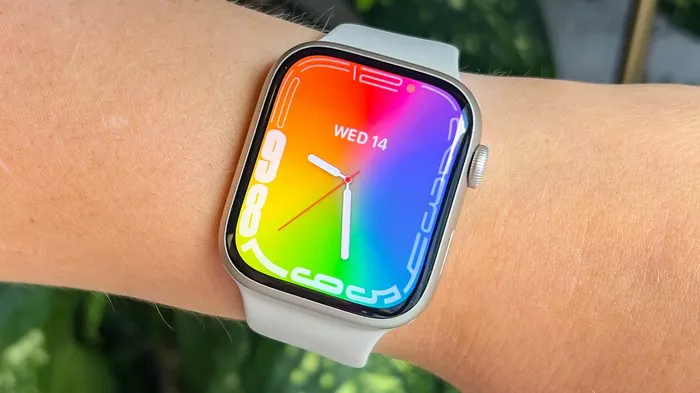Understanding how long 10% battery lasts on an Apple Watch involves multiple factors. This comprehensive article will delve into the specifics, considering various Apple Watch models, usage patterns, battery health, settings, and tips to extend battery life.
Overview of Apple Watch Battery Life
Apple Watch Models and Battery Life
Apple Watch models have varying battery capacities and efficiencies. Here’s a brief overview:
- Apple Watch Series 1: Up to 18 hours.
- Apple Watch Series 2: Up to 18 hours.
- Apple Watch Series 3: Up to 18 hours.
- Apple Watch Series 4: Up to 18 hours.
- Apple Watch Series 5: Up to 18 hours.
- Apple Watch Series 6: Up to 18 hours.
- Apple Watch SE: Up to 18 hours.
- Apple Watch Series 7: Up to 18 hours.
- Apple Watch Series 8: Up to 18 hours.
- Apple Watch Ultra: Up to 36 hours.
Factors Influencing Battery Life
The actual battery life can vary significantly based on several factors:
- Usage Patterns: Intensive use of apps, GPS, heart rate monitoring, and calls can drain the battery faster.
- Settings: Brightness, haptic feedback, background app refresh, and always-on display settings impact battery consumption.
- Battery Health: Over time, the battery’s capacity diminishes, affecting its overall performance.
Detailed Analysis of 10% Battery Life
Typical Usage Scenarios
Light Usage
- Time Check: If you only check the time occasionally, 10% battery might last several hours.
- Notifications: A few notifications per hour can slightly reduce battery life.
- Low Brightness Setting: Keeping the screen brightness low conserves battery.
Moderate Usage
- Notifications and Activity Tracking: Regular notifications and occasional use of the Activity app will reduce battery life faster.
- Music Control: Controlling music playback occasionally can impact battery usage.
- Moderate Brightness Setting: Using the watch at a moderate brightness level consumes more power.
Heavy Usage
- Workouts and GPS: Using the workout app with GPS tracking will significantly drain the battery.
- Calls and Messages: Frequent calls and message checks can quickly deplete the battery.
- High Brightness Setting: A high screen brightness setting uses more battery.
Estimated Duration for Different Models
- Apple Watch Series 1-3: 10% battery might last about 1-2 hours under light usage, 30-60 minutes under moderate usage, and less than 30 minutes under heavy usage.
- Apple Watch Series 4-6, SE, Series 7-8: 10% battery could last around 2-3 hours under light usage, 1-2 hours under moderate usage, and 30-60 minutes under heavy usage.
- Apple Watch Ultra: Given its larger battery, 10% might last 3-4 hours under light usage, 2-3 hours under moderate usage, and 1-2 hours under heavy usage.
Extending Battery Life on Apple Watch
Battery-Saving Tips
Adjust Settings
- Lower Brightness: Reduce screen brightness to conserve power.
- Turn Off Always-On Display: Disable the always-on display feature to save battery.
- Limit Notifications: Customize notification settings to reduce frequency and type of alerts.
- Disable Background App Refresh: Turn off background app refresh to minimize battery drain.
Use Power Reserve Mode
- Activate Power Reserve: Use Power Reserve mode to extend battery life by limiting functionality to time display only.
Optimize Workouts
- GPS and Heart Rate: Turn off GPS and heart rate monitoring for non-essential workouts.
- Shorter Workouts: Opt for shorter workout sessions to preserve battery life.
Battery Health Management
- Regular Charging: Avoid letting the battery drop to 0%; charge regularly.
- Software Updates: Keep the watch’s software updated for optimal battery management.
- Battery Calibration: Occasionally let the battery drain completely and then charge it fully to recalibrate.
Understanding Battery Specifications and Performance
Battery Capacity and Chemistry
Apple Watch batteries are lithium-ion, known for their high energy density and longevity. Over time, all lithium-ion batteries experience capacity degradation.
Measuring Battery Health
- Battery Health Feature: Check battery health through the settings to understand capacity and performance.
- Battery Replacement: Consider replacing the battery if health drops below 80%.
Impact of Software and Firmware
Apple frequently releases updates that can optimize battery performance. Ensure the watch is running the latest firmware to benefit from these improvements.
See Also: Are Apple Watch 1 Waterproof
Real-World Usage Examples
Daily Routine
- Morning: 10% battery can last for basic functions like checking time, notifications, and light app usage during the morning routine.
- Midday: Moderate activity tracking, occasional calls, and music control might consume 10% battery in a couple of hours.
- Evening: Heavy use like workouts, GPS tracking, and continuous app usage might deplete 10% battery in less than an hour.
Travel Scenarios
- Short Trips: 10% battery might be sufficient for short trips involving occasional map checks and notifications.
- Long Journeys: For longer journeys, power reserve mode can help extend battery life significantly.
Comparison with Other Smartwatches
Battery Life Metrics
Comparing Apple Watch battery performance with other leading smartwatches like Samsung Galaxy Watch and Fitbit can provide perspective on efficiency and longevity.
User Experience and Reviews
User reviews and experiences often highlight practical battery life insights. Exploring forums and reviews can give a real-world understanding of battery performance.
Conclusion
Understanding how long 10% battery lasts on an Apple Watch requires considering various factors such as model, usage patterns, settings, and battery health. By optimizing settings, using power-saving modes, and managing battery health, users can maximize their Apple Watch’s battery life effectively. This comprehensive analysis provides a detailed guide to understanding and improving Apple Watch battery performance.

